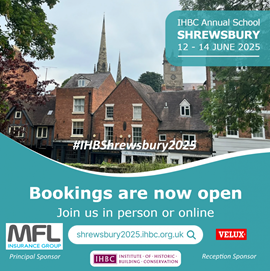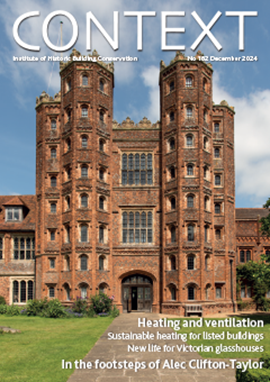Transforming AEC with IoT and Automation: The Future of Smart Buildings
Contents |
[edit] Introduction
The architecture, engineering, and construction (AEC) industry is witnessing a paradigm shift with the integration of Internet of Things (IoT) and automation technologies. These advancements are not only enhancing efficiency and productivity but also paving the way for the development of smart buildings. In this blog, we will explore how AEC with IoT and automation is revolutionising the sector and shaping the future of our built environment.
[edit] The Rise of IoT in AEC
The Internet of Things (IoT) refers to the network of physical objects embedded with sensors, software, and other technologies to connect and exchange data with other devices and systems over the internet. In the AEC industry, IoT is playing a pivotal role in transforming traditional construction processes into more intelligent and responsive systems.
- Enhanced Building Management Systems (BMS): IoT-enabled sensors and devices are being integrated into Building Management Systems (BMS) to monitor and control various building functions such as lighting, heating, ventilation, and air conditioning (HVAC). This allows for real-time data collection and analysis, leading to optimised energy consumption and reduced operational costs.
- Predictive Maintenance: IoT devices can continuously monitor the health of building systems and infrastructure, providing predictive maintenance alerts before a failure occurs. This proactive approach minimises downtime, extends the lifespan of equipment, and saves significant costs associated with emergency repairs.
- Smart Construction Sites: Construction sites are becoming smarter with the use of IoT devices. Wearable technology for workers, GPS-enabled equipment tracking, and drone surveillance are enhancing safety, improving project management, and ensuring timely completion of construction projects.
[edit] Automation: The Game Changer
Automation in the AEC industry involves the use of advanced robotics, artificial intelligence (AI), and machine learning (ML) to perform tasks that were traditionally done manually. The combination of automation with IoT is driving unprecedented efficiency and precision in construction processes.
- Robotic Construction: Robots are being employed for various construction tasks such as bricklaying, concrete pouring, and welding. These robots can work tirelessly and with high precision, significantly reducing human error and increasing construction speed.
- AI-driven Design and Planning: AI and ML algorithms are being used to analyse vast amounts of data and generate optimised building designs and construction plans. This not only accelerates the design process but also ensures that the final structures are more efficient and sustainable.
- Automated Facility Management: Once buildings are completed, automation continues to play a crucial role in facility management. Automated systems can control lighting, HVAC, and security systems based on real-time data from IoT sensors, providing a seamless and energy-efficient environment for occupants.
[edit] The Future of Smart Buildings
The integration of AEC with IoT and automation is leading to the creation of smart buildings that are more connected, efficient, and responsive to the needs of their occupants. Here are some ways in which smart buildings are set to transform our lives:
- Energy Efficiency: Smart buildings leverage IoT and automation to optimise energy usage, reducing carbon footprints and operational costs. Intelligent systems can adjust lighting and HVAC settings based on occupancy and weather conditions, ensuring minimal energy wastage.
- Enhanced Occupant Experience: IoT devices and automation create a more comfortable and personalised environment for building occupants. Smart lighting, climate control, and security systems can be tailored to individual preferences, enhancing the overall user experience.
- Sustainable Construction: The adoption of IoT and automation in the AEC industry promotes sustainable construction practices. By optimising resource utilisation, reducing waste, and implementing predictive maintenance, smart buildings contribute to a more sustainable and resilient built environment.
[edit] Conclusion
The integration of IoT and automation in the AEC industry is revolutionising the way buildings are designed, constructed, and managed. The future of smart buildings is here, promising greater efficiency, sustainability, and enhanced occupant experiences. As the industry continues to embrace these technologies, the potential for innovation and transformation in AEC with IoT and automation is boundless.
In the coming years, we can expect to see even more sophisticated applications of these technologies, further cementing their role as the backbone of modern, intelligent infrastructure. The future is smart, and it is being built today.
[edit] Related articles on Designing Buildings
- Advanced construction technology.
- Artificial intelligence in buildings.
- Building automation.
- Building energy efficiency - is building automation the answer?
- Engineering Smart Cities.
- European connected and smart home market.
- Internet of things.
- Megatrends: Smart Building Technology.
- Smart city.
- Smart cities design timeframe.
- Smart buildings.
- Smart construction.
- Smart technology.
- The future of smart buildings.
- The smart buildings market.
- The Smart building in the smart city.
IHBC NewsBlog
SAVE celebrates 50 years of campaigning 1975-2025
SAVE Britain’s Heritage has announced events across the country to celebrate bringing new life to remarkable buildings.
IHBC Annual School 2025 - Shrewsbury 12-14 June
Themed Heritage in Context – Value: Plan: Change, join in-person or online.
200th Anniversary Celebration of the Modern Railway Planned
The Stockton & Darlington Railway opened on September 27, 1825.
Competence Framework Launched for Sustainability in the Built Environment
The Construction Industry Council (CIC) and the Edge have jointly published the framework.
Historic England Launches Wellbeing Strategy for Heritage
Whether through visiting, volunteering, learning or creative practice, engaging with heritage can strengthen confidence, resilience, hope and social connections.
National Trust for Canada’s Review of 2024
Great Saves & Worst Losses Highlighted
IHBC's SelfStarter Website Undergoes Refresh
New updates and resources for emerging conservation professionals.
‘Behind the Scenes’ podcast on St. Pauls Cathedral Published
Experience the inside track on one of the world’s best known places of worship and visitor attractions.
National Audit Office (NAO) says Government building maintenance backlog is at least £49 billion
The public spending watchdog will need to consider the best way to manage its assets to bring property condition to a satisfactory level.
IHBC Publishes C182 focused on Heating and Ventilation
The latest issue of Context explores sustainable heating for listed buildings and more.















